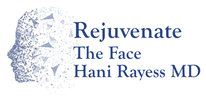A chin implant is a procedure to help people with small chins or retruded (pushed back ). It increases the size of your chin in the horizontal vector but not the vertical one. I.E pushed it out but not down. it is a quick procedure that can be done under local sedation. It will not change the way your teeth line up. It can help you achieve a nicer jawline as well as neckline by pushing the chin and neck skin out. Oftentimes it is suggested as an additional procedure to rhinoplasty as a method of gaining better harmony across the different structures in the face or combined with neck liposuction.
Who is a chin implant candidate?
Patients who have a retruded or pushed back jaw are often candidates for a chin implant. You will often notice that the chin is small and sits behind the lips on profile view or when looking from the side. A small chin can make your nose look bigger and can make it harder to achieve a good neck line during a facelift.
What are my options for enhancing the chin? Are any permanent?
There are 3 main options to enhance your chin. Dermal filler is one option. The fillers are injected to provide more volume to the chin. Injecting the chin usually requires numerous syringes and is not permanent. Fat transfer is also an option, this requires harvesting your fat from your belly, processing it and injecting it into the chin area. Lastly a chin implant can be placed. The implants are typically made from silicone, are permanent and can be placed in a simple procedure with local anesthesia. In general Dr Rayess prefers this method.
What are the main risks of chin implant?
The biggest risk to be concerned about is an implant infection which will mean the implant will need to be removed. This is a very rare occurrence as we use the most sterile technique when placing these implants and In addition we soak the implant in antibiotic solution prior to placing it. Dr Rayess has conducted research on the complications of facial implants and you can read his peer reviewed published study here. Other risks include possible nerve injury, which is rare and implant asymmetry or movement which is not common because we secure the implant with sutures.
Will my chin implant move?
During the initial healing phase it is possible for the implant to shift, this is very rare and Dr Rayess secures his implant to ensure that this risk is minimized. After the initial healing phase, a fibrous layer will form around the implant helping to keep it secure.
What is the recovery from chin implant?
The recovery process from a chin implant is relatively minor. You will have swelling and bruising in the area which will come down over 7-10 days. You will have tape over your chin which will be removed in 5 days. The results of the chin implant will be noticeable immediately. The chin implant will not affect your ability to chew.

